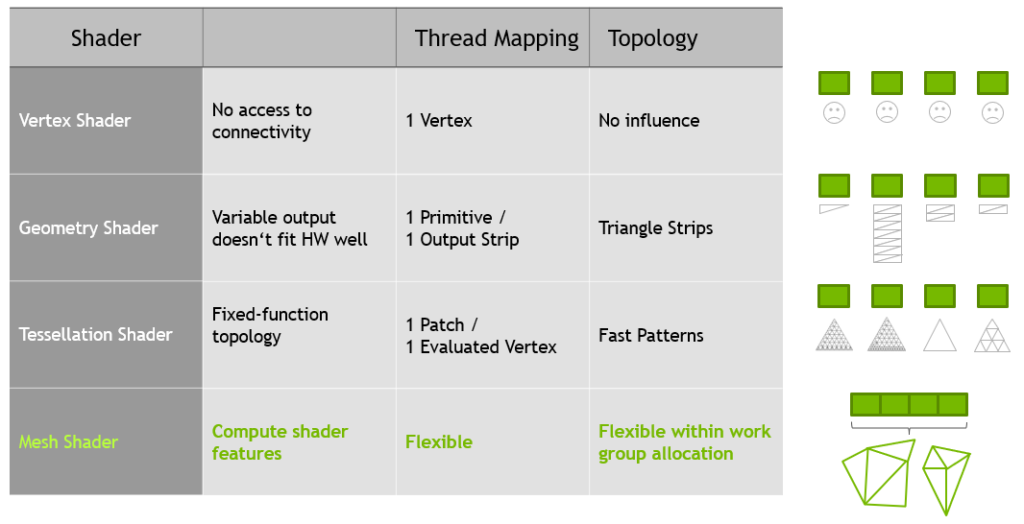winjer
Gold Member
I explained above your post in different my posts.
You do realize that Mesh shaders replace a bunch of somewhat fixed function units, with a highly programable geometry pipeline.
You do realize that Primitive shaders only replace VS+DS+GS. Meaning it has to do several things the old fashion way.
While Mesh Shaders replace the entire geometry pipeline.






